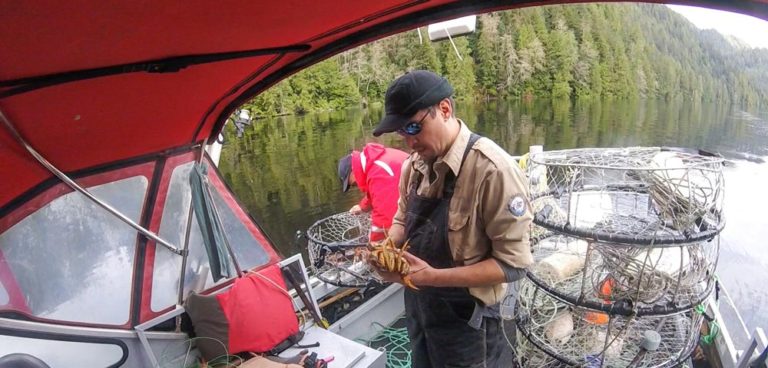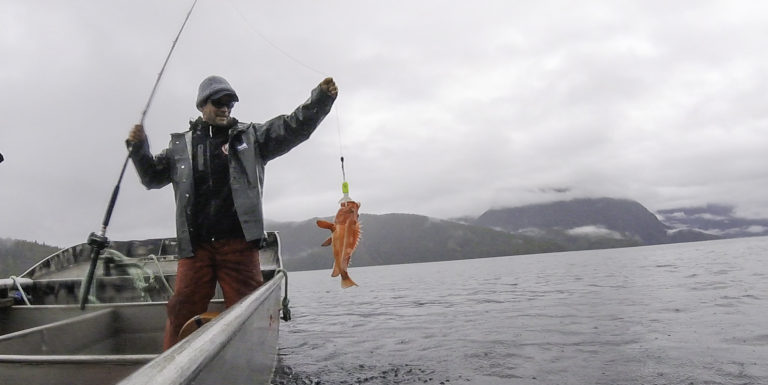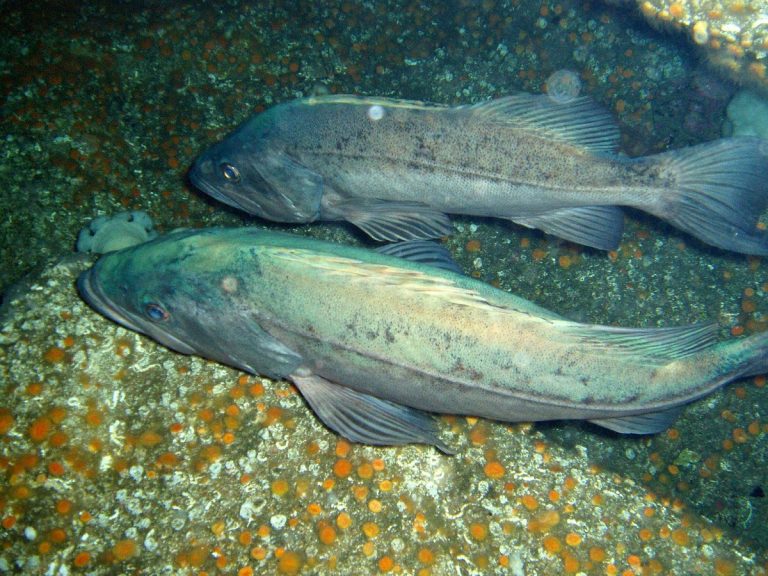Rockfish and Lingcod Research

Our Nations’ rockfish and lingcod research has been continuing in our territories.
Using a combination of traditional knowledge and science we are creating an extensive dataset for these fish across the central coast. This knowledge will enhance the longterm management of these important species.
“The DFO did not start collecting scientific data on these species until 10 or 15 years ago,” says Alejandro Frid, CCIRA’s Science Coordinator. This means that there is no baseline data from the past on the size and abundance of fish to compare with what we find today. “If we want to manage these species effectively, we really need to know what the populations looked like in the past and if they’ve changed over time”, Alejandro explains. Without this information it is difficult to know what kind of conservation targets we should be aiming for today.
Probing our elder’s knowledge
“The breadth of the knowledge the elders have about rockfish and lingcod populations from the past is remarkable.” – Lauren Eckhart, Masters Student, Uvic
To shed light on past fish populations, Lauren Eckhart has been interviewing elders in our communities as part of her Master’s thesis at Uvic. Under the supervision of Assistant Professor Natalie Ban and Alejandro – who has recently become an Assistant Adjunct Professor at Uvic – Lauren has interviewed 10-15 elders in each of our communities. She is now busy compiling that information. When completed, Lauren’s work may reveal far more about what past rockfish and lingcod populations looked like than any scientific data available.
“It has been an amazing experience to interview elders in the communities,” says Lauren. “The breadth of the knowledge the elders have about rockfish and lingcod populations from the past is remarkable.”
Collecting scientific data
Meanwhile, our researchers have been out on the water collecting scientific data on the current status of fish in our territories. We are gathering important new information by doing hook and line sampling, investigating the catch of long line fishermen, conducting dive surveys and towing underwater video cameras to sample deep waters.

Preliminary results from this work show very few yelloweye rockfish (red snapper) in our territories over 40 or 50 years old, even though these fish are known to live up to 120 years. The same is true for other long-lived fish. “There is a notable absence of old fish in our study,” explains Alejandro. “This suggests that there is a history of overfishing here, but we can’t really know that unless we can figure out what the fish populations looked like 40 of 50 years ago.”
Integrating our elder’s knowledge of historical fish populations with the best science of today will create an informative new picture of rockfish and lingcod on the central coast. Collectively, this information will be used to enhance the long-term management of these species and help inform the marine planning processes underway in our territories.
In other words, we hope this work will help make abundant, big and old fish part of the lives of future generations – and not just part of our people’s past.
Integrating our elder’s knowledge of historical fish populations with the best science of today will create an informative new picture of rockfish and lingcod on the central coast.






